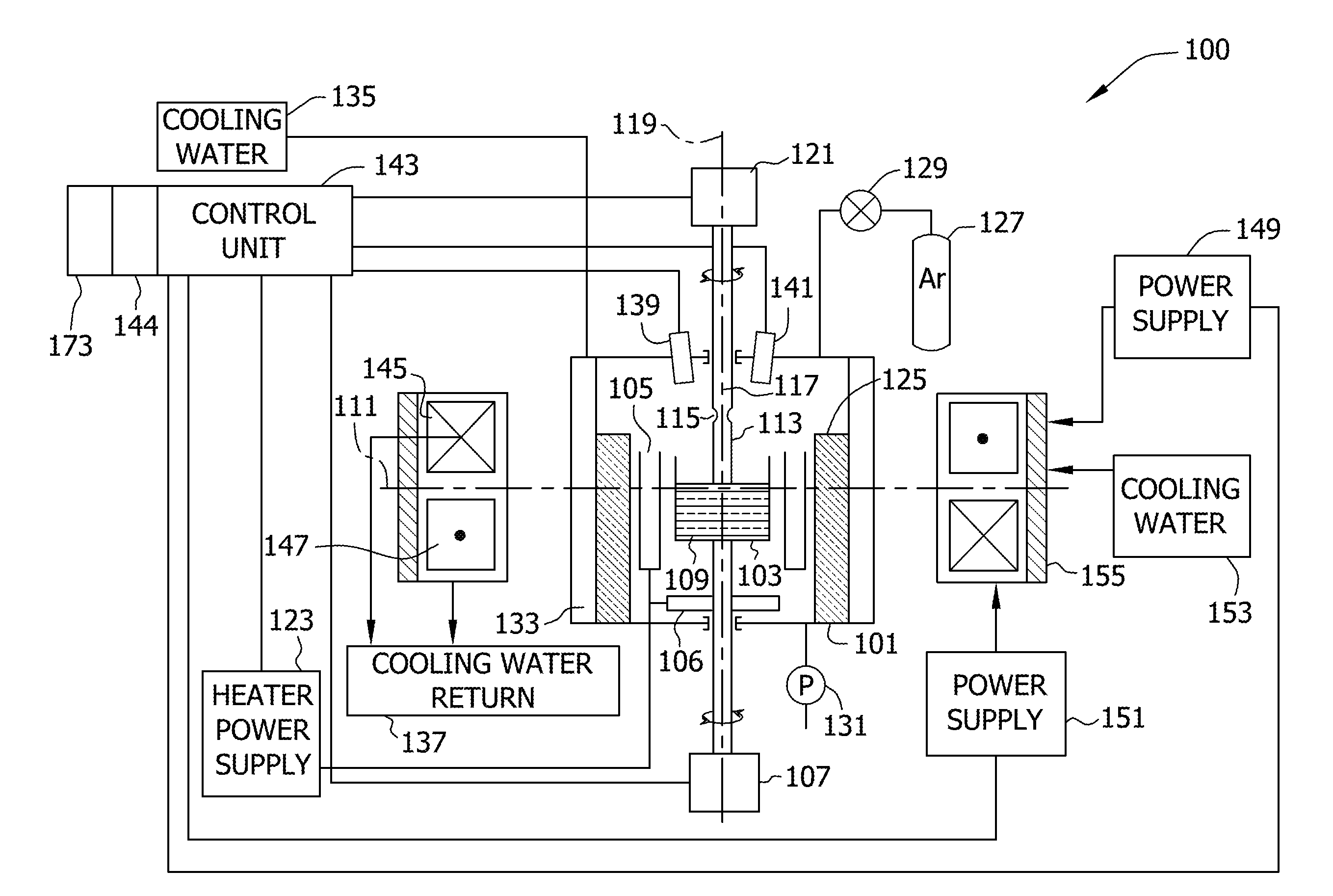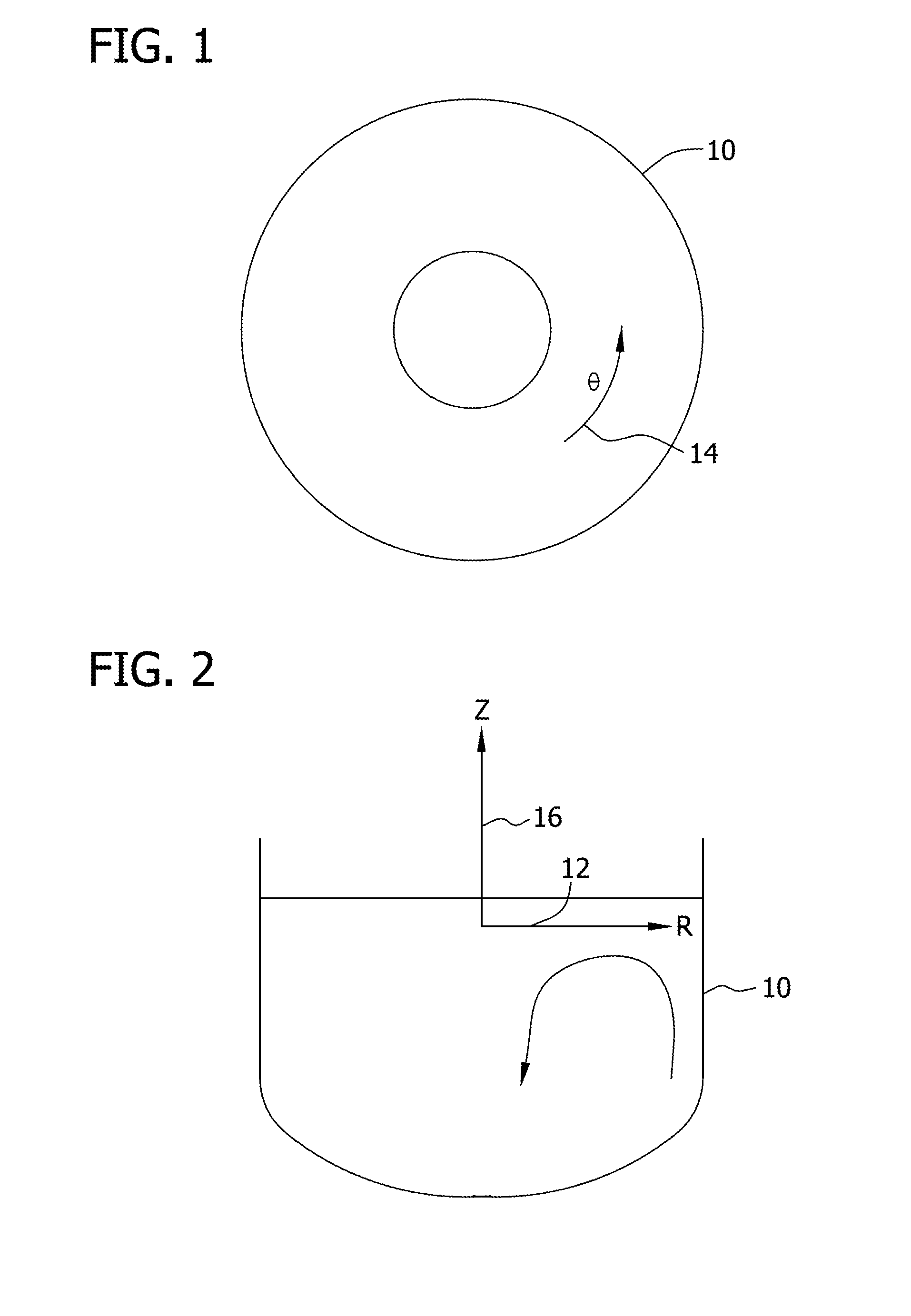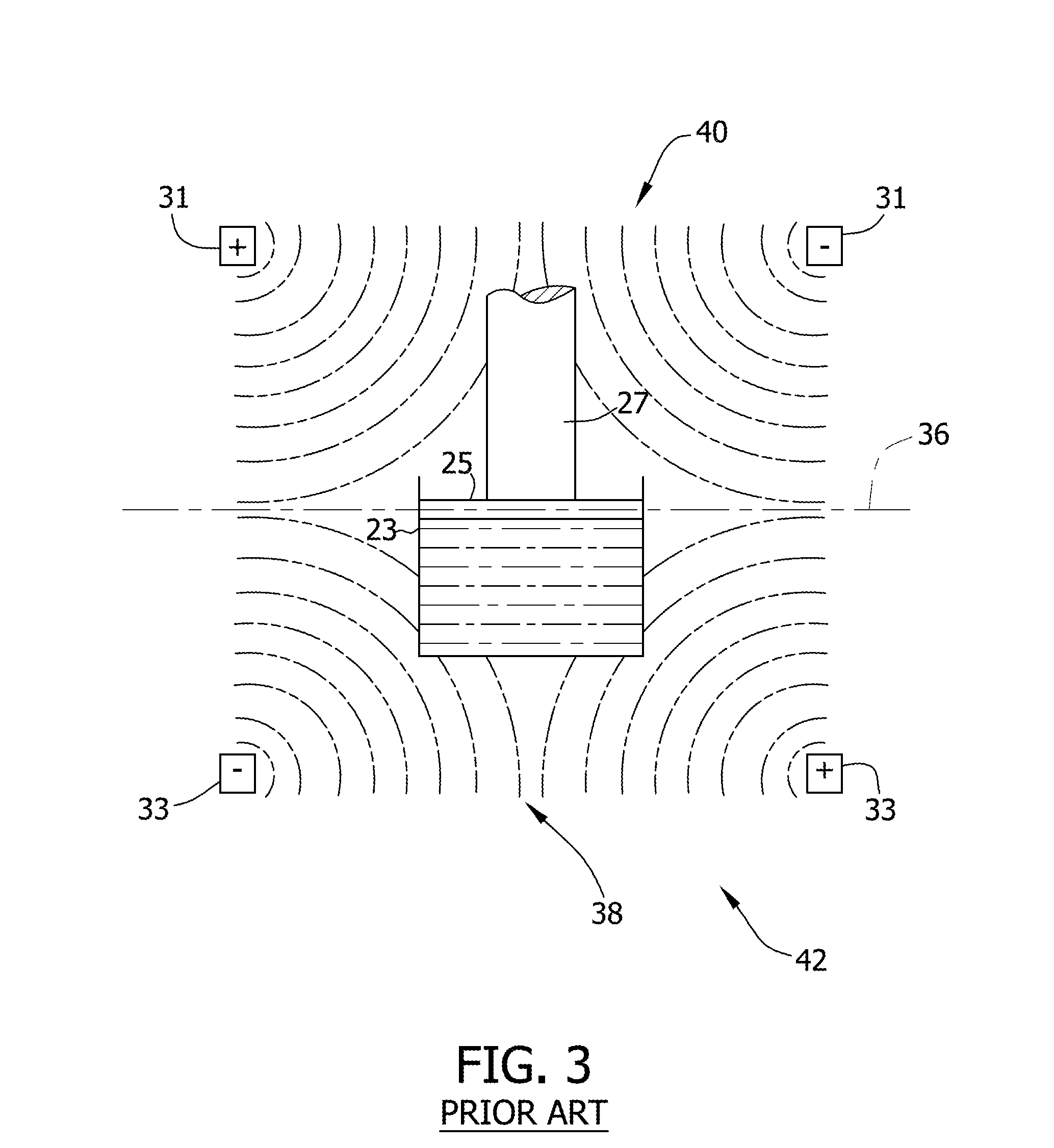Methods for producing low oxygen silicon ingots
a technology of silicon ingots and oxygen concentration, which is applied in the direction of polycrystalline material growth, crystal growth process, polycrystalline material growth, etc., can solve the problems of reducing the yield of semiconductor devices fabricated using ingots, wafers may have relatively weak mechanical strength, and relatively poor slip performan
- Summary
- Abstract
- Description
- Claims
- Application Information
AI Technical Summary
Benefits of technology
Problems solved by technology
Method used
Image
Examples
Embodiment Construction
[0025]Referring initially to FIGS. 1 and 2, a crucible of one embodiment is indicated generally at 10. A cylindrical coordinate system for crucible 10 includes a radial direction R 12, an angular direction θ14, and an axial direction Z 16. Coordinates R 12, θ14, and Z 16 are used herein to describe methods and systems for producing low oxygen silicon ingots.
[0026]FIG. 3 is a block diagram illustrating a cusped magnetic field being applied to a crucible 23 containing a melt 25 in a crystal growing apparatus. As shown, crucible 23 contains silicon melt 25 from which a crystal 27 is grown. The cusped magnetic field configuration is designed to overcome deficiencies of axial and horizontal magnetic field configurations. A pair of coils 31 and 33 (e.g., Helmholtz coils) are placed coaxially above and below a melt surface 36. Coils 31 and 33 are operated in an opposed current mode to generate a magnetic field that has a purely radial field component (i.e., along R 12) near melt surface 36...
PUM
| Property | Measurement | Unit |
|---|---|---|
| diameter | aaaaa | aaaaa |
| diameter | aaaaa | aaaaa |
| diameter | aaaaa | aaaaa |
Abstract
Description
Claims
Application Information
 Login to View More
Login to View More - R&D
- Intellectual Property
- Life Sciences
- Materials
- Tech Scout
- Unparalleled Data Quality
- Higher Quality Content
- 60% Fewer Hallucinations
Browse by: Latest US Patents, China's latest patents, Technical Efficacy Thesaurus, Application Domain, Technology Topic, Popular Technical Reports.
© 2025 PatSnap. All rights reserved.Legal|Privacy policy|Modern Slavery Act Transparency Statement|Sitemap|About US| Contact US: help@patsnap.com



